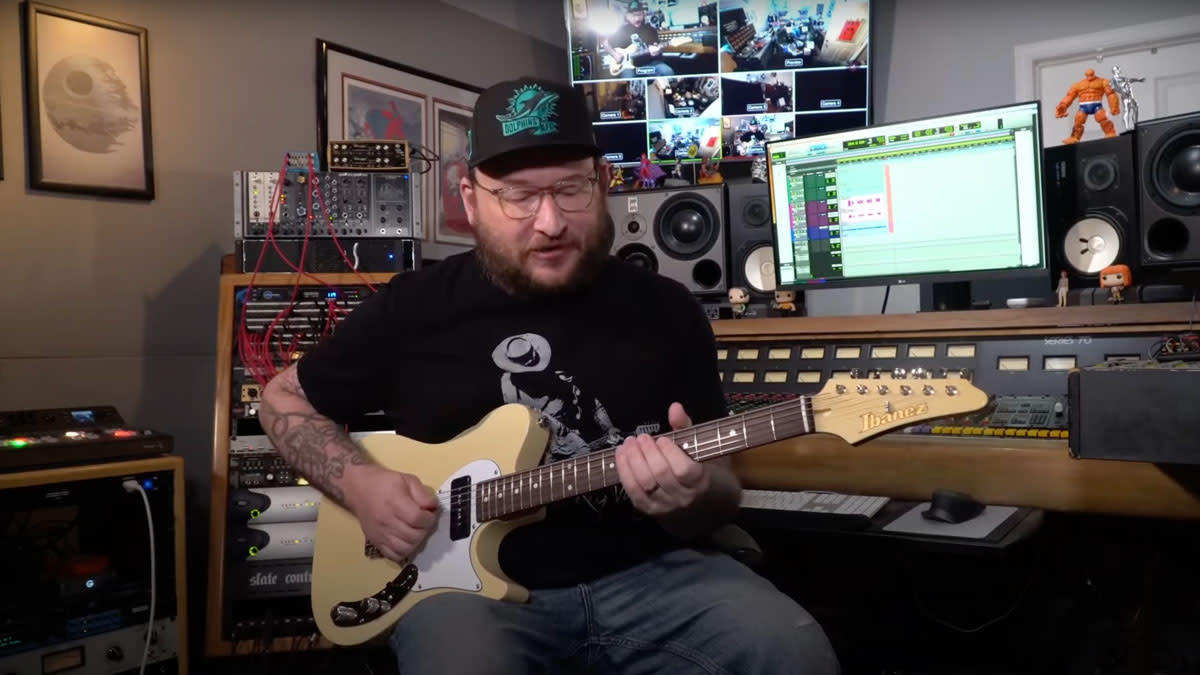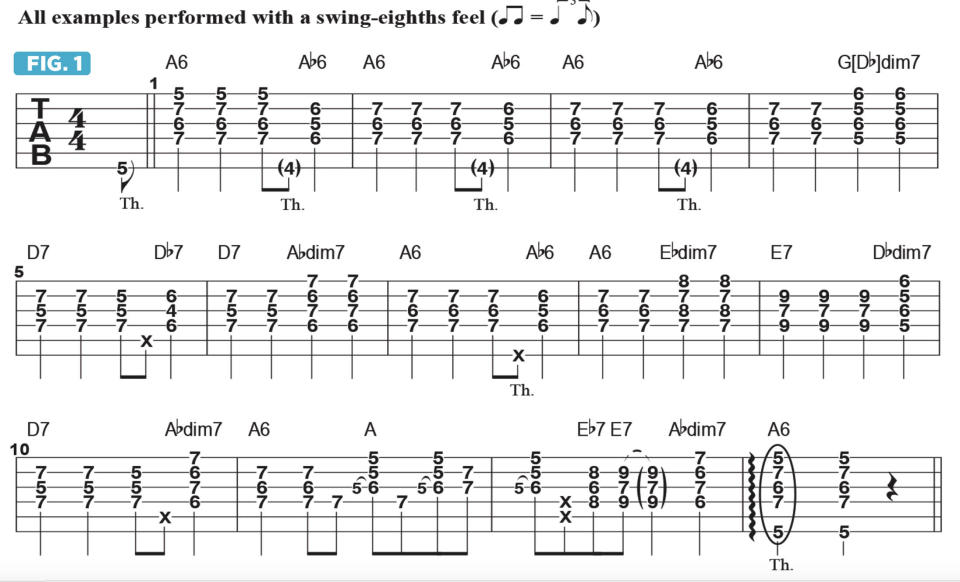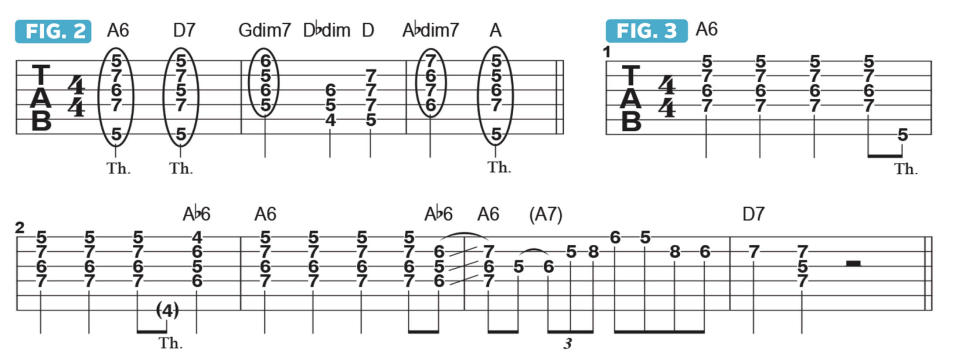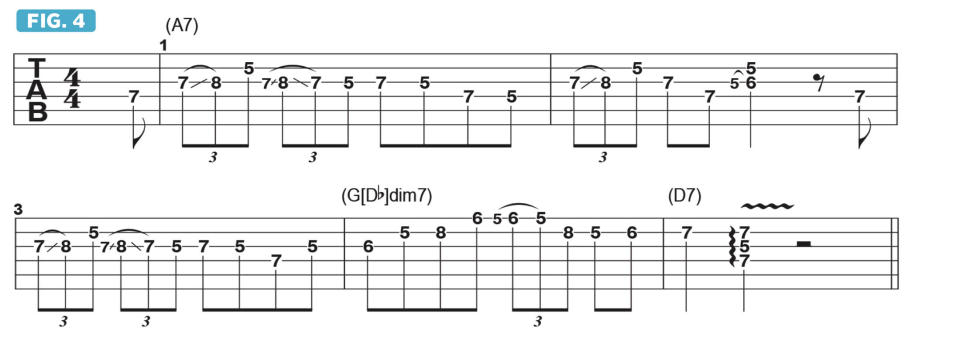Why diminished phrases can be your secret weapon in a blues chord progression

Previously, we explored the use of chromaticism within the blues as part of an approach that I like to use to connect one chord to the next in a blues progression, namely, chromaticism, diminished phrases and ii - V - I (two-five-one) turnarounds. This time, we will focus on diminished 7 chords, which I’ll refer to simply as diminished.
Let’s begin our investigation of how to bring in diminished chords in the same way we covered the joys of chromaticism, by first playing rhythm guitar only across the 12-bar blues progression and dropping in the appropriate diminished chords to “connect” one chord to the next in a harmonically interesting way.

Figure 1 represents a rhythm guitar approach, played as a shuffle in the key of A, that brings in the diminished chord one half-step below, just as the chord change is coming up in the subsequent bar, utilizing the diminished chord as a “bridge” to tie one primary chord to the next.
Sometimes, I'll use an inversion, or different voicing, of the diminished chord, but it will still be a half step below the chord that follows.
In bars 1-3, I play A6 in steady quarter-note strums, with a half-step move from Ab6 to A6 at the end of each bar. In bar 4, as we're about to switch to the IV chord, D7, I instead play Gdim7 (G, Bb, Db, E), which can also be analyzed as Dbdim7, Bbdim7 or Edim7.
At the end of the two bars on D7, I drop in Abdim7, which serves as a bridge back to A6. Similarly, in bar 8, Ebdim7 is used to set up the change to E7, and in bar 9, I play Dbdim7 to D7. In bars 10-12, Abdim7 once again serves as a lead-in to A6 or A.

Figure 2 details the shift from A6 to D7: as I make this move, I play the Gdim7 voicing shown in bar 2, which is an inversion of Dbdim7. On the way back from D7 to A, I use the Abdim7 voicing shown in bar 3.
We’ve all heard this type of harmony played in the blues. When one’s ear becomes accustomed to that diminished sound, one naturally wants to apply it to a single-note melodic line, which can add so much to one’s musical vocabulary.
Figure 3 demonstrates how to use diminished ideas in a single-note line, as a way to connect the I chord to the IV. We start with four bars on the I, A6, and in bar 4, after sliding into A6 from one fret below, I play a single-note line consisting of the notes C#, E, G and Bb, which are the chord tones of both Gdim7 and Dbdim7. The phrase culminates with chromatic approach-tone movement from F to F#, making clear reference to the IV chord, D7.

As shown in Figure 4, I can play blues-type phrases across the first three bars over A7 and then drop in that Gdim7 lick in bar 4, as a bridge to set up the change to D7.
That lick alone will open your ears up to using these types of harmonically interesting chordal references in your solos.

